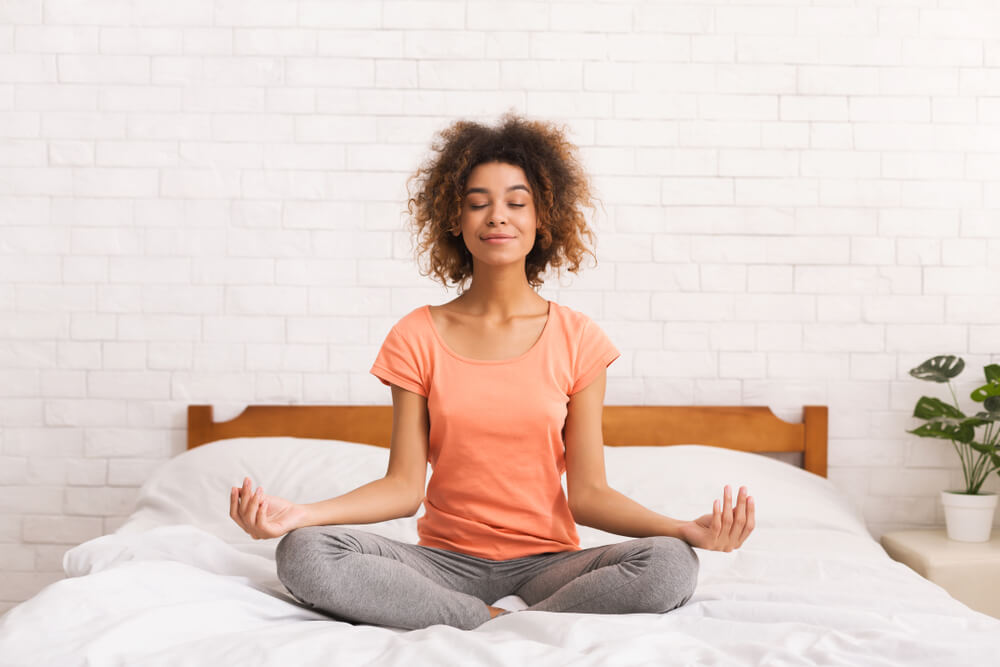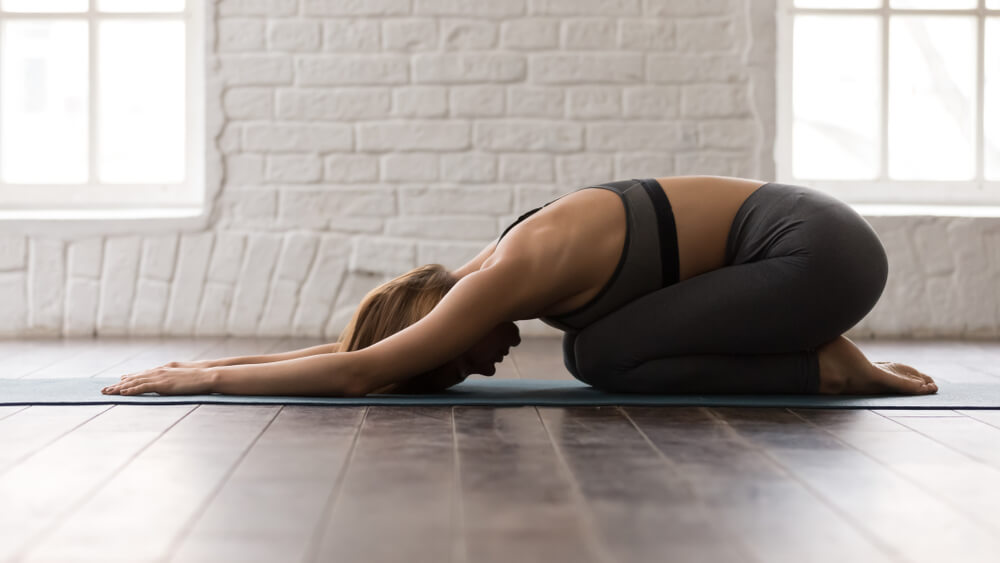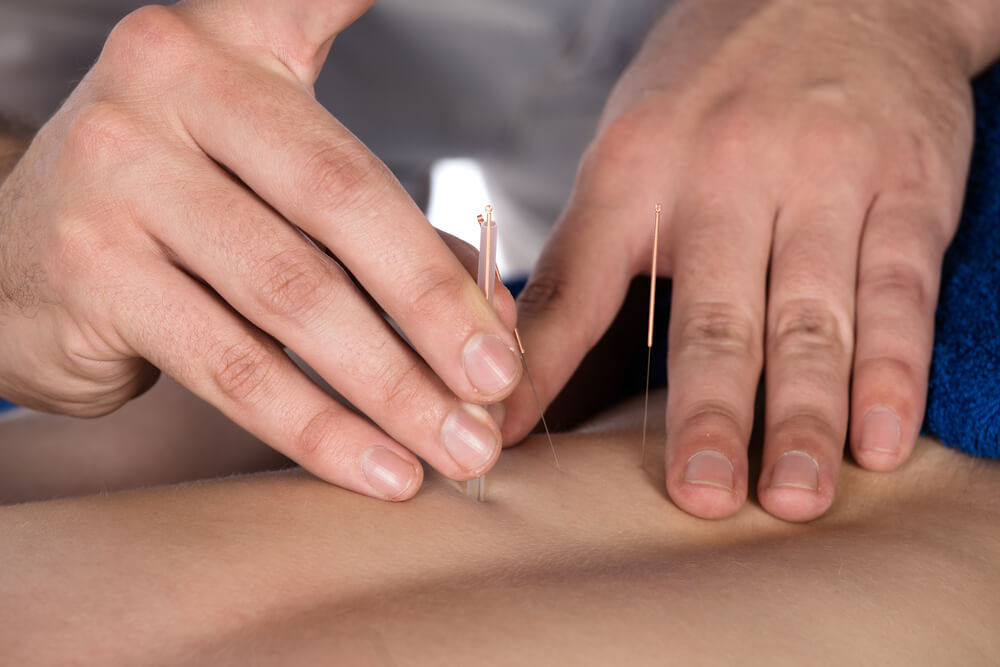Effective Natural Remedies to Relieve Neck Pain
Table of Contents
What Is Neck Pain?
The neck is composed of small bones, called vertebrae, which extend from the skull to the shoulders. Cervical discs interleave the vertebrae to absorb any shocks to the neck (or the spine, in general). The muscles, bones, and ligaments collectively form the support structure that offers movement to the neck. Inflammation to any or all elements of the neck could result in neck pain.
Cervicalgia, ordinarily known as neck pain, is a common occurrence. In fact, it is a prominent musculoskeletal disorder(1) prevalent amongst the adult population.
Nearly 17 to 75 percent(2) of the world population suffers from neck pain. In most cases, slight neck pain is not a reason to panic.
However, it can be rather annoying and inconvenient to bear the pain for long durations. If you are troubled by the question, “What can I do for neck pain?” then you have come to the right place. Here is a complete guide on how to relieve neck pain so that it is no longer a pain in the neck!
Neck pain is characterized by a sharp or dull pain in the neck, the base of the neck, or the shoulder region. The pain may also be accompanied by stiffness, headache, numbness, dizziness, difficulty while eating, or general difficulty in maintaining balance.
Types of Neck Pain
Before you find ways on how to get rid of neck pain, you need to understand the different kinds of neck pain. Once you have a better understanding of the type and reason for the neck ache, you will be better equipped with techniques for neck pain relief.
1. Muscular Pain
Constant stress or tension in the muscles surrounding your neck could cause muscular neck pain. This happens as a result of overexertion of muscles. This type of neck pain results in the development of hard knots that feel tender when touched.
2. Spasmodic Pain
A sudden and intense tightening of neck muscles results in spasmodic neck pain. You may experience tightness and acute pain to a point where it may be difficult to turn your head! The muscles around your neck may feel knotted and tight. You may have experienced this type of neck pain on days when you wake up with a stiff, painful neck. It may be an indication of a muscle injury, emotional stress, or even a nerve or spinal disc problem.
3. Facet Joint Pain
The facet joint is a part of the vertebrae of the neck. Facet joint pain is characterized by a sharp, agonizing, aching, or deep ache in these joints. The pain becomes even more intense if you lean your head towards the affected side. The neck pain may also spill over to the shoulder and/or upper back.
4. Nerve Pain
Nerve pain is caused due to the pinching or irritation of the roots of the nerves. As a result, the spinal nerves trigger a response that results in a severe yet short-lived pain, which is generally followed by temporary numbness or pins and needles. Depending on which nerve gets pinched, the pain may even shoot down the arm right up to your fingertips!
5. Referred Pain
When pain or discomfort of one part or organ of the body reflects in another portion of the body, it is known as referred pain. As such, referred neck pain may not be due to a localized problem, rather an issue somewhere else. For example, neck pain and its aggravation if you exert yourself could be due to heart issues. Similarly, neck pain while eating could indicate problems with the esophagus.
Causes of Neck Pain

Excessive strain on muscles could lead to neck pain. A poor sitting posture, sleeping in wrong positions, working at your desk for far too long without changing position, and jerking your neck while exercising could cause tension or strain in your muscles. The strain occurs due to the fact that the muscles and ligaments of the neck are pushed beyond their normal range of motion. Whiplash is a severe neck injury caused by the sudden and abrupt jerking of the head.
Arthritis is also a major cause of neck pain. It is the painful swelling of joints. You could be more prone to neck pain and its resulting complications if you have arthritis in your neck. Spondylosis is chronic neck pain, much like osteoarthritis of the neck. It is characterized by the degeneration of the cervical discs, which narrows the space present between the vertebrae.
How to Relieve Neck Pain
Here we will explore a few home remedies for neck pain. However, practice caution while trying out these tips on how to treat a neck pain as overdoing it may further exacerbate the problem. If the symptoms of your neck pain get worse, seek professional help immediately.
- Exercises
- Essential Oils
- Home Remedies
CURE 1: Exercises for Neck Pain
A few stretching exercises can drastically reduce your neck pain to the point where you don’t even feel it at all!
1. Seated Neck Release
This is a stretching exercise wherein you need to be seated either on the floor or on a chair. Ensure that your back is straight so that it adds no more strain on your neck or shoulders.
How to do it?
- Cross your legs if you are sitting on the floor or keep your feet flat on the floor if you are sitting on a chair.
- Gently extend your right arm and place it on your knee (for the cross-legged position) or place your palms at the end of the armrest (for those seated on the chair).
- Place your left hand right above your right ear and slowly tilt your head towards the left.
- Apply gentle pressure with your hand until you feel a slight stretch.
- Hold the position for 30 seconds and then slowly raise your head to the neutral position.
- Repeat the same for the right side tilt.
Why is it effective?
The seated neck release is a gentle stretching exercise that targets your side muscles. Stretching the muscles releases the tension built up inside of it.
Quantity and frequency of usage
Do three sets of this exercise once a day
2. Seated Hand Clasp Neck Stretch

This exercise is another sitting exercise where you can sit on a chair or on the floor. Maintain a proper posture for greater efficacy of the exercise. A tall spine will balance your torso as you bend while practicing this exercise.
How to do it?
- Intertwine your fingers to clasp your hands together. Place the palms at the back of your head.
- Place your hips firmly into your seat.
- Now gently pull your elbows towards your legs. Tuck your chink into your chest as you lower your head.
- For an intense stretch, you may press the heel of your hands in an outward direction to gently push your head away from your shoulders. You must not feel any sharp pain while doing this exercise.
- Hold the position for 30 seconds.
- Slowly lift your head in a neutral position and unclasp your hands and release them to your sides.
Why is it effective?
This exercise stretches the muscles present in the back of your neck and upper back. As a result, it releases the tension present in these muscles.
Quantity and frequency of usage
Do two sets of this exercise twice a day.
3. Grounded Tip-Over Hand Tuck
This is a combination of Yoga and stretching exercise and is particularly useful for headaches and drowsiness arising from neck pain.
How to do it?
- Kneel on the floor and then bend your body over your thighs. Place your shins and forehead firmly on the floor.
- Hold the position for a few seconds until you get comfortable. You will notice that your chest will adjust with your thighs, and your breathing will be less laborious.
- Clasp your hands below your buttocks. Interlace your fingers and for added stretch, touch the palms together to form a double fist.
- Slowly lift your hand out as far as you can. As you do so, lift your hips off your heels and shift your weight towards your forehead.
- Stay in the position for 10 seconds and gently lower your hips. Hold for 10 seconds.
- Once again lift your hips off your heels.
- Continue the process for 5 to 10 times. Release your hands and get back to a comfortable seating position.
- Practice some breathing exercises.
Why is it effective?
This exercise stretches the muscles in your upper back and neck. Tipping your weight towards the head promotes blood circulation to the head. As such, it counters any dizziness or headaches.
Quantity and frequency of usage
Practice this exercise once in a day
4. Bridge
This exercise is much similar to the yoga position but contains the added stress of clasping your hands and pulling it in the outward direction. It offers you absolute control over how much stretch you wish to give your muscles.
How to do it?
- Lay flat on an even surface and place your arms on your sides. Your palms must touch the floor.
- Bend your knees in a manner that your feet rest flat on the floor. Keep the knees shoulder-width apart, and the feet parallel to each other.
- Squeeze your feet as close as you can get it to your buttocks. Secure all your holdings such as your feet, your upper torso, and your arms.
- Press your palm towards the ground and gently lift your hips off the floor. Clasp your hands below the pelvic region.
- Rock from side to side to evenly distribute your weight and bring your shoulder blades together.
- Hold this position for 30 seconds and continue to push your hips upwards as per your comfort.
- Slowly lower your bum to the ground, fold your knees upwards and press them against your chest. Wrap your arms around your knees and hug them for about 10 seconds.
Why is it effective?
This exercise offers complete and wholesome stretching of the spine. As a result, the muscles of the upper torso also experience the stretch. As such, the Bridge exercise targets back pain along with neck pain.
Quantity and frequency of usage
Do three sets of this exercise once a day to reap its pain-relieving benefits.
CURE 2: Yoga for Neck Pain
“What is good for neck pain? How to reduce neck pain?” If you find yourself asking such questions, then the answer lies in a single word – Yoga.
As your neck is highly delicate, you may have reservations against subjecting your already sore neck to exercise further. This is where Yoga comes handy. Yoga opens up your neck without putting too much pressure or strain. It makes movement easier as the muscles begin to relax.
Here are a few yoga poses for neck pain:
1. Sukhasana

Sukhasana, otherwise known as the Easy Pose, can be done anywhere. This exercise is a slight modification of the traditional yoga pose to offer added neck pain relief.
How to do it?
- Stretch out your legs in front of you. While crossing your shins, widen your knees. Slip your feet beneath the knee of the opposite leg.
- Fold in your legs towards your torso. However, you should maintain an adequate gap between your feet and your pelvis.
- This position would form a triangle with the outer edges touching the floor, and the inner edges fall in line with the shin. Once again, maintain an adequate distance between your pelvis and your feet.
- Straighten and elongate your back, while stacking your palms against your lap. Alternatively, you may even place your palms on your knees.
- Stay in this position for two whole minutes while moving your head from ear-to-shoulder and back on either side.
Why is it effective?
This asana facilitates the lateral movement of the neck. It stretches out the trapezius and shoulder muscles.
Quantity and frequency of usage
Do this asana once in a day. Ideally, you should practice it early in the morning on an empty stomach.
Also Read: 5 Effective Yoga Postures to Treat Nausea
2. Gomukhasana
Gomukhasana, commonly known as Cow Face Position, requires a moderate amount of flexibility. If you find it difficult to clasp your hands, you can make use of a strap.
How to do it?
- Sit erect with your legs stretched outwards from your torso.
- Gently bend your left leg inwards and tuck it beneath the right side of your buttock.
- Fold your right leg in a bridge formation over your left thigh.
- Press your knees close to each other so that they come in line as though they are stacked atop each other.
- Fold your left hand backward with your palm facing outwards.
- Extend your right arm outwards and bend it over your shoulders, towards your back with the palm facing inwards.
- Stretch so that the left and right hand come in contact. Clasp your hands.
- Keep your back erect and gently lean towards the back.
- Hold this pose for as long as you feel comfortable. Observe your breathing.
- Switch sides.
Why is it effective?
This asana stretches out your back, shoulder, and neck muscles. It releases built-up tension and eases the movement of your neck.
Quantity and frequency of usage
Do this once a day early in the morning; there should be a gap of at least 12 hours since your last meal.
Also Read: Yoga Poses to Improve Your Running
3. Marjariasana and Bitilasana
The Cow and Cat pose are performed together to stretch out your spine. It is an extremely easy yoga pose.
How to do it?
- Stand on your fours with your hands and knees evenly spaced out. Ensure that your arms and knees are perpendicular to the floor.
- Turn your gaze ahead.
- As you inhale, tilt your head backwards and raise your chin. Raise your tailbone while pushing your navel down. Clench your buttocks until you feel a slight tingling sensation.
- Hold the pose and inhale and exhale deep, long breaths.
- While exhaling, drop your chin as you tilt your head downwards. Tuck your chin against your chest. Push your tailbone upwards and arch your back. Relax your buttocks as you do this.
- Hold this position and take long and deep breaths.
- Get back to a neutral position.
Why is it effective?
The gentle rise-and-fall flowing motion flexes out the entire spine. It offers a wonderful stretch to your torso, neck, and back.
Quantity and frequency of usage
Do both the asana for five to six times twice a day.
Also Read: Benefits of Yoga and Meditation for Alzheimer’s
4. Balasana

Balasana, or the Child’s Resting Pose, mimics a child’s fetal position. It not only relaxes your muscles but also promotes mental and emotional well-being.
How to do it?
- Kneel down with your big toes touching each other. Gently sit down on your heels.
- Spread the knees outwards until you maintain a hip-wide distance.
- Extend your arms towards the back and circle them to the front. Bend towards the front and lean down until your torso reaches the area between your thighs. Exhale while you do this.
- Push your head away from your neck while lifting your tailbone outwards.
- Stretch out your arms outwards in such a way that your shoulder blades feel a slight pull from the arms.
- Stay in this position for about 30 to 60 seconds.
- Stretch the front torso, and lift your body while pressing down your tailbone towards your pelvis. Inhale while doing this.
Why is it effective?
The Child’s Pose releases tension from the body and mind. It stretches out all the muscles right from the base of your spine up to the neck and shoulders. As a result, it easily counters the pain and soreness, making it the go-to method for how to heal neck pain.
Quantity and frequency of usage
Since this is a resting position, you may do this two to four times, depending on the intensity of the neck pain.
Also Read: Health Benefits of Yoga
5. Savasana
Every yoga asana ends with Savasana. This pose looks deceptively simple but can be tough as you need to relax your mind and parts of your body. Due to its restorative action, it provides deep healing to the individual practicing it. If you are wondering “How to heal neck pain?” then practicing this asana could satisfy your curiosity.
How to do it?
- Lay down flat on a hard, flat surface in a comfortable position.
- Position your legs in a manner such that they are comfortably apart. Place your feet in a relaxing position and ensure that your toes are facing sidewards.
- Place your arms along your sides at a slight distance from your body. Open your palms and face them upwards.
- Close your eyes and relax your body.
- Start by focusing on your toes. Relax each and every muscle present in your feet.
- Slowly move your way up your legs, to your abdomen, to the torso, neck, arms, and head. Keep breathing deep and slow.
- Do not fall asleep while doing this. Continue breathing until your body relaxes completely. Focus on your body and tune out your surroundings.
- Continue practicing this position for about 10 to 12 minutes.
- Sit up in a Sukhasana position.
Why is it effective?
The Savasana helps in completely relaxing the body. It brings mental peace and offers an energizing yet calming conclusion to the yoga session. Your neck will relax.
Quantity and frequency of usage
Practice this asana after wrapping up your yoga session.
Also Read: Yoga Poses for Beginners
CURE 3: Essential Oils for Neck Pain
If you are looking for a natural cure for your neck pain, then you may wish to consider essential oils. Various essential oils possess qualities that make it potent against muscle pulls, soreness, and swelling. You may blend two or more essential oils for additional relief.
Here are a few essential oils suited for relieving neck pain.
1. Lavender Oil

Lavender oil is an essential oil that is extracted from the lavender plant. It bears a sweet aroma that has a calming and relaxing effect. Apart from diffusing lavender oil, you can apply it topically or even ingest it orally.
Why is it effective?
Lavender essential oil possesses antispasmodic(3) and analgesic qualities. The anti-inflammatory(4) properties of Lavender can significantly reduce swelling and tenderness. As a result, it can help in relieving neck pain and soothe any muscular spasms.
How to use it?
- Apply 3 to 4 drops of Lavender essential oil around your neck region.
- Massage gently using your thumb.
Alternatively, you can create a lavender essential oil compress with the method given below:
- Mix about ten drops of Lavender oil to a small tub of warm water.
- Soak a clean towel in this solution and wring out the excess water.
- Place the towel against your neck.
Quantity and frequency of usage
Apply Lavender oil at least twice a day for neck pain relief.
2. Eucalyptus Oil
Eucalyptus oil is distilled from the leaves of the Eucalyptus tree, which is originally a native to Australia. It is widely used for clearing sinuses(5) and to treat cold and cough. However, it can also relieve pain in joints. Thus, a number of over-the-counter ointment and balm contain Eucalyptus oil in it.
Why is it effective?
Eucalyptus oil contains natural anti-inflammatory properties(6) that can reduce swelling or inflammation in your muscles.
Its antispasmodic qualities(7) can cure neck pain arising from muscle spasms. Further, studies have discovered the analgesic(8) effect of Eucalyptus oil on muscles and joints
How to use it?
Apply 4-5 drops of eucalyptus oil to the neck and the tender areas and gently massage it in. Alternatively, you can draw a warm bath and add 7-8 drops of eucalyptus oil to it. Take a bath in this mixture up to your neck, and you will observe a noticeable decrease in the pain.
Quantity and frequency of usage
Do this twice a day until the pain subsides.
3. Chamomile Oil
Chamomile is one of the oldest medicinal herbs(9) used by mankind. It possesses a host of compounds that promote health and well-being. While chamomile tea is widely known for aiding sleep and relaxing the mind, the benefits of chamomile oil are not unknown either. The essential oil comes in two variants – German and Roman. The former contains strong anti-inflammatory properties while either of them can act as an analgesic.
Why is it effective?
Chamomile oil is particularly effective against inflammation and spasms. It is due to the presence of bioactive compounds like beta-caryophyllene, camphene, cineole, and others. The anxiolytic properties(10) relax the mind and release tension from the body.
Studies suggest that due to the volatile nature of the oil, it can easily penetrate into the deeper layers of the skin, which makes it highly efficient in offering deep-tissue pain relief.
How to use it?
Dab a few drops of chamomile oil on your neck and gently massage it in a circular motion. You can soak a few drops of chamomile oil in a cloth and inhale from it if you suffer from a headache arising from neck pain.
Quantity and frequency of usage
Do this once a day. Ideally, applying this oil at night before going to bed can greatly improve your condition.
4. Clary Sage Oil

Clary Sage oil is also known as “Woman’s Oil” as it is highly effective against menstrual cramps. Further, it also well-known for mood balancing and restorative action. Due to its pleasant aroma, it is a highly regarded ingredient of perfumes.
Why is it effective?
The essential oil contains compounds like Linalyl Acetate, Linalool, Germacrene-D, and Alpha-Terpineol, which is known for its anti-inflammatory, antispasmodic, and analgesic properties(11). As such, clary sage oil can significantly reduce the pain or inflammation in your neck region.
How to use it?
Add 3 to 5 drops of clary sage oil with 30 ml of carrier oil of your choice. Now, add it to your bath and soak until your neck. Alternatively, you can directly apply the oil blend to your neck.
Quantity and frequency of usage
Make use of Clary Sage oil at least once a day to gain its benefits.
5. Wintergreen Oil
Traditionally extracted from the leaves of the Wintergreen plant, wintergreen essential oil comes in two variants – North American and Asian (also called Indian). It is also known as teaberry oil or gaultheria oil.
Why is it effective?
The active ingredient present in wintergreen oil is methyl salicylate(12), which bears a close resemblance to the constitution of Aspirin. Further, it contains potent analgesic and anti-inflammatory properties that make it more preferred to synthetic painkillers. Topical application of Wintergreen has proven to be highly effective(13) against any kind of pain.
How to use it?
Dilute 2 to 3 drops of wintergreen essential oil in 10 ml of carrier oil. Apply it to the sore and aching muscles to relieve the pain. It can also be effective against headaches.
Quantity and frequency of usage
Follow this remedy once a day. As methyl salicylate can be toxic in large concentrations, do not overdo it. Ensure that you practice caution while making use of wintergreen oil as ingestion of this essential oil could be fatal.
6. Peppermint Oil
Peppermint is a plant obtained by crossing water mint and spearmint. It is widely used as a fragrant and flavoring for cosmetics and food items, respectively. The oil has a positive impact on your digestive system and may even help with Irritable Bowel Syndrome (IBS).
Why is it effective?
Peppermint essential oil contains menthol. The cooling action of menthol helps in having an analgesic(14) effect. Further, the oil can help in relieving spasms, cramps, and inflammation.
How to use it?
Apply 4 to 5 drops of peppermint oil to the neck region and gently massage it for 2 to 3 minutes. If you have sensitive skin, you may dilute it with a carrier oil.
You could also brew peppermint tea using fresh peppermint leaves.
Quantity and frequency of usage
Massage your neck with peppermint oil twice a day.
CURE 4: Home Remedies For Neck Pain
Here are a few natural remedies on how to cure neck pain:
1. Heat or Ice Treatment
Heat or ice treatment (scientifically known as thermotherapy and cryotherapy respectively) are highly effective against sore muscles. For initial days, make use of ice treatment so that the swelling and inflammation may come down. Following this, you can use alternating heat or ice pack for long-term neck pain cure.
Material Required and Process
- For Cold Treatment:
- A clean towel
- A small tub of water
- Soak the towel in the water and wring out the excess
- Place it in the freezer for about 20 to 30 minutes
- Apply the cold towel to your neck. You may even wrap around your neck. Let it stay for about 10 to 15 minutes.
Note: If the towel is too cold for your comfort, use a thin cloth as a buffer.
For Heat Treatment:
- A clean towel.
- A small tub containing hot water.
- Soak the towel in the water and wring out the excess.
- Apply the hot towel to the inflamed portion for about 20 to 30 minutes.
Note: You can even stuff a clean sock with uncooked rice and microwave this makeshift heating pad for 1 to 2 minutes
You can even use high-quality gel packs and place it in a freezer or hot water to use it as a cold or hot pack, respectively.
Why is it effective?
The icy cold temperature helps in bringing down the inflammation(15) and soreness in your neck. The drop in temperature shrinks and closes the small blood vessels, which curbs the swelling.
On the other hand, heat treatment(16) promotes the flow of blood in the affected area. As a result, the region gets more oxygen, which in turn speeds up healing.
Quantity and frequency of usage
Use this treatment three to four times a day. However, always start with ice packs until the inflammation has come down. Heat treatment could possibly aggravate the condition.
2. Massage

A gentle massage can be helpful for neck pain. Various health organizations support massage therapy(17). However, be very careful as overdoing it can cause more damage than good.
Material Required and Process
Warm carrier oil such as coconut, mustard, olive oil or canola
- Apply a thin layer of oil on your neck
- Work along with the tension present in the muscles of your neck. Make use of short strokes and choose a direction away from the heart.
- Use your thumb to make circular motions at the base of your neck
Note: Massage your neck after a warm shower for added relief
Why is it effective?
Gently massaging and rubbing a sore or aching area stimulates the blood flow(18) in the body. It detoxifies the muscles and nourishes it with blood. As a result, the muscles become more supple and offer greater flexibility.
Quantity and frequency of usage
Massage your neck every morning or before you go to bed. You can do it twice a day.
3. Kinesiology Tape
You may have seen a Kinesiology tape when you watched a sportsman wearing a colorful tape on their shoulder, elbow, knee, or even abs. The Kinesiology Tape was developed by a Japanese chiropractor, Dr. Kenzo Kase.
What is it?
Kinesiology Tape (or KT) is a therapeutic tape that is strategically applied to a body part in order to provide support without limiting any movement. It is reported to improve pain and lessen any pain and/or swelling.
Why is it effective?
KT is highly stretchable. As a result, Kinesio tape can be used for neck pain or other similar tough spots. Once it is applied to the surface, it recoils, which gently lifts the skin. It is believed that it creates spaces, which allow the deep layers to heal. Some studies indicate that KT improves blood flow due to the presence of subcutaneous space, which attracts lymph fluids. It may also help fix poor posture(19), which is the most common cause of neck pain!
Quantity and frequency of usage
You can apply the tape depending on the location of your neck pain. Since it is waterproof and has a strong adhesive, it will stay put for about 3 to 5 days.
4. Acupuncture

If the niggling pain refuses to go, you can even try acupuncture for neck pain!
What is it?
Acupuncture is a process where tiny needles are inserted into strategic points of the body to provide pain relief.
Why is it effective?
The acupuncture points are triggered by the needles. As a result, it encourages the circulation of lymphatic fluid and blood, which helps in relieving the pain. Studies(20) have performed trials on subjects suffering from chronic neck pain and have found acupuncture to be surprisingly effective. Needless to say, you must only visit a certified practitioner to treat your neck pain through this treatment.
5. Acupressure
If needles make you squeamish and you would prefer a non-scary way to treat your neck pain, you may give Acupressure a chance. It makes use of reflexology for treating neck pain.
What is it?
Acupressure identifies body points that are linked to organs or portions of the body, and you can cure any ailments by massaging the trigger point. While there is very little scientific evidence(21) of the effectiveness of Acupressure, anecdotal reviews are glowing.
Why is it effective?
Acupressure is based on reflexology, which is a principle that believes that stimulating pressure points in the body can affect various body parts or organs. It follows the logic that deep pressure to the pressure points can trigger the nervous system to increase blood flow to the targeted area.
Reflexology Pressure Points for Neck Pain
The following pressure points can help with various types of neck pain:
- Jian Jing (GB21): Shoulder muscles.
- He Gu (L14): Webbing between the thumb and forefinger.
- Feng Chi (GB20): Behind the earlobe.
- Zhong Zu (TE3): Knuckles of the pinky and ring finger.
- Heaven’s Pillar: Sides of the neck (at the base).
6. Epsom Salt Bath
Epsom Salt, scientifically known as Magnesium Sulfate, was first discovered in Epsom, Surrey (England). They are commonly called Bath Salts. Although it is termed as a “salt,” it is unpalatable due to its bitter taste.
Material Required and Process
- A cup of Epsom salt.
- A warm bath.
- Draw a warm bath and add a cup of Epsom salt to it.
- Mix it thoroughly until the salt dissolves. Soak in the bath for 10 to 15 minutes.
Why is it effective?
Dissolving the salt in water releases the Magnesium and Sulfate ions, which can be absorbed through the skin(22). These minerals regulate the enzymes present in your body and boost the blood circulation. As a result, it reduces stress and muscle tension(23).
Quantity and frequency of usage
You can have an Epsom salt bath once a week.
Do(s) and Don’t(s) for Neck Pain
Here are a few Dos and Don’ts to follow when you are suffering from neck pain:
Do(s)
- Place your laptop or Desktop at eye-level to avoid pressure on your spine.
- If you have a desk job, get up and walk around every once in a while. You may even perform neck rotations while on breaks.
- Your neck is not isolated from the rest of the body. The weight of the head is evenly distributed through the spine. Thus, get a lower back support pillow as it may strengthen your spine.
- Maintain good posture so that your neck is in a neutral position.
- Keep your shoulders in a relaxed position, and not hunched over.
Don’t(s)
- Avoid the tendency to thrust your chin forward while speaking, walking, or even sitting.
- Do not apply too much pressure while massaging your neck.
- Do not roll your neck. You can move your neck side-to-side instead.
- Avoid using the phone in a leaning position where the phone is cradled between your shoulder and neck.
With these pointers, you will be well equipped with tips on how to relieve neck pain. Find a suitable remedy that fits your lifestyle and offers significant neck pain relief. If the pain persists for more than five days, schedule an appointment with your physician.




